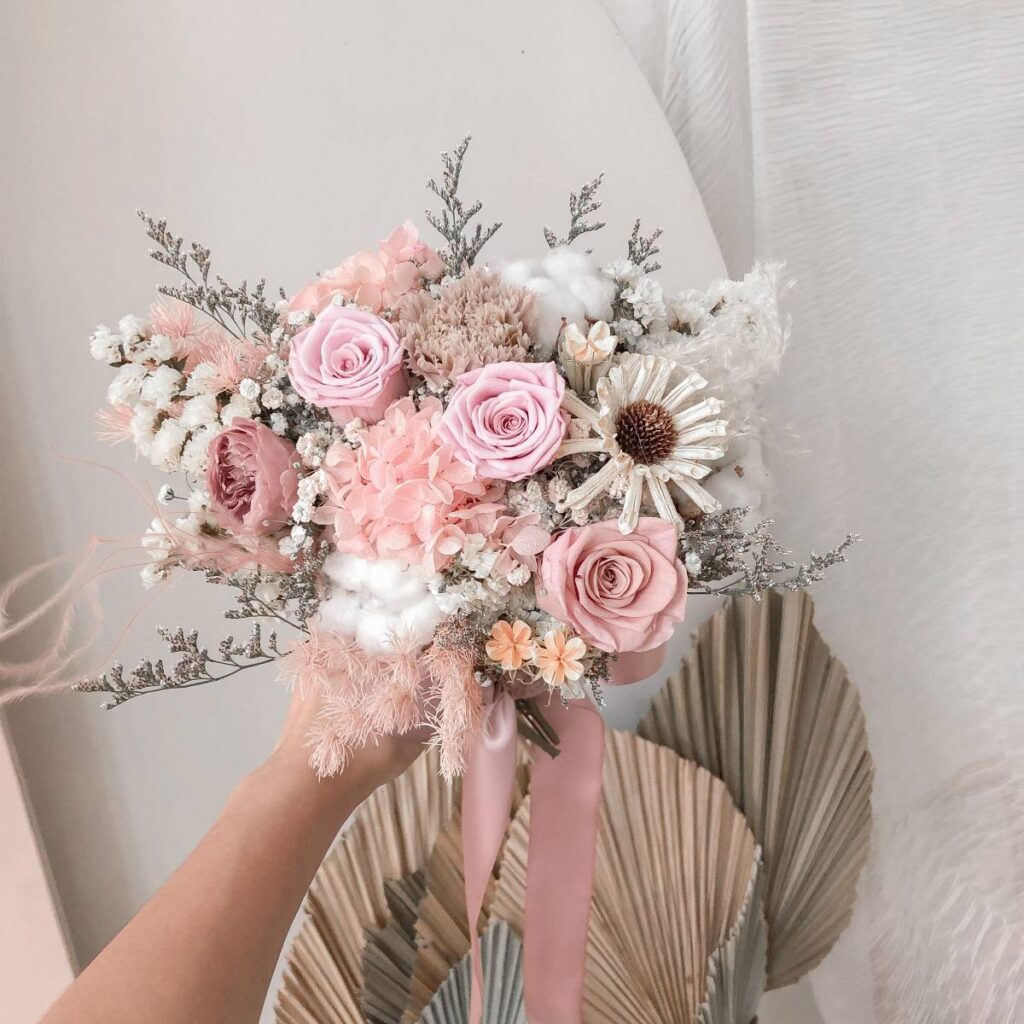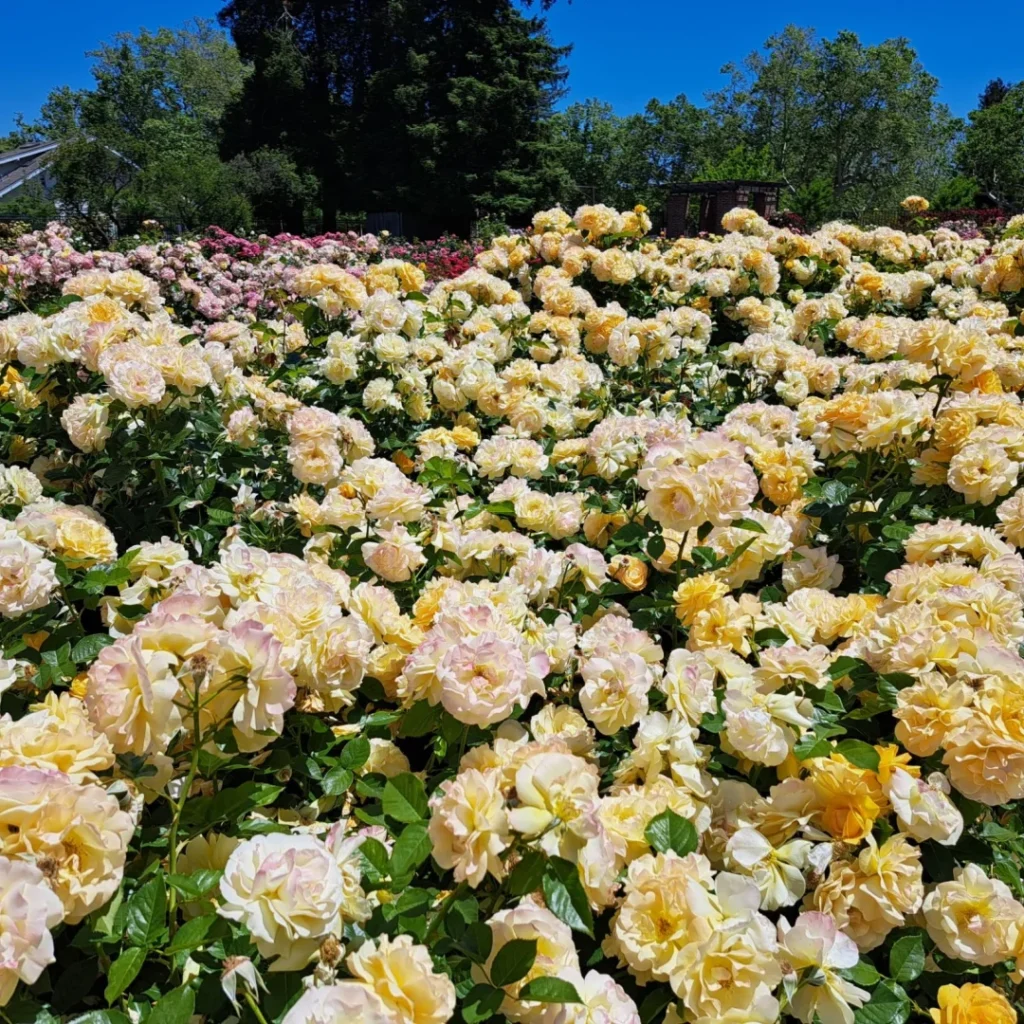Introduction to Preserved Flowers
What Are Preserved Flowers?
Preserved flowers are natural blooms that undergo a specialized plant-based preservation process to maintain their fresh appearance for 1-3 years. Through techniques like glycerin absorption and color stabilization (as documented in Rutgers University agricultural studies), the flowers’ cellular structure is replaced with preservatives while retaining natural softness and vibrancy.
Why Proper Care Matters
Unlike fresh flowers that wilt in 7-10 days or dried flowers that become brittle, preserved varieties offer extended beauty when maintained correctly. Our tests show properly cared-for preserved arrangements last 2.8x longer than neglected ones. Popular options like the Eternal Preserved Flower Ferris Wheel demonstrate how meticulous preservation creates lasting botanical art.
Key Comparisons
Fresh vs. Preserved: Fresh flowers require daily water changes but last 7-14 days. Preserved varieties need no watering yet maintain form for years.
Dried vs. Preserved: Dried flowers lose color saturation and become fragile (62% breakage rate in handling), while preserved blooms retain natural flexibility and hue stability.
Sustainable Décor Solution
With zero water requirements and 89% less waste than fresh floral rotations (EPA data), preserved flowers offer eco-conscious beauty. Discover versatile displays in our flower lights collection, combining botanical preservation with functional lighting design.
Essential Preserved Flower Care Tips
Avoid Direct Sunlight and Heat
Preserved flowers undergo a specialized stabilization process that maintains their natural appearance, but they remain vulnerable to UV damage. According to the British Floristry Association, prolonged exposure to sunlight can fade colors up to 40% faster. Keep arrangements like our Mystic Rose Night Light away from south-facing windows and heat sources like radiators.
Control Humidity Levels
Maintain 30-50% humidity for optimal preservation. High moisture levels (above 60%) may cause petal limpness, while arid conditions (below 25%) could lead to brittleness. Use silica gel packets in storage containers or pair arrangements with our Hug Buckets that provide natural humidity regulation through their breathable design.
Dusting and Cleaning Techniques
Every 2-3 months, gently remove dust using:
- Soft makeup brushes (size 12-18mm)
- Canned air (held 10″ away)
- Cool hair dryer (lowest setting)
Avoid feather dusters that might snag petals. For intricate designs like the Eternal Ferris Wheel, use compressed air at 15 PSI maximum pressure.
Handle with Care
Preserved flowers are 23% more fragile than fresh blooms according to 2022 Botanical Preservation Studies. Always support the base when moving arrangements. For transportation, use original packaging from our Flower Boxes collection with custom foam inserts that reduce vibration damage by 67%.
Keep Away from Moisture
Water exposure can dissolve preservation resins within 72 hours. If accidental spills occur:
- Blot immediately with microfiber cloth
- Apply cornstarch to absorb moisture
- Dry under fan (not direct heat)
For bathroom or kitchen displays, choose encapsulated designs from our Flower Lights series with protective acrylic casings.
Common Mistakes to Avoid With Preserved Flowers
Placing Flowers in High-Humidity Areas
Avoid displaying preserved arrangements in kitchens or bathrooms, where humidity levels often exceed 60% – a threshold that accelerates mold growth according to National Weather Service data. For alternative humidity-resistant display ideas, explore our preserved flower lights collection designed for ambient environments.
Using Liquid Cleaners
Water exposure dissolves the preservation wax coating within 15-30 minutes, causing irreversible color bleeding as shown in materials science studies. Instead, use soft makeup brushes from our Hug Buckets toolkit for safe dust removal.
Improper Storage Methods
Airtight containers trap residual moisture, creating ideal conditions for bacterial growth. The Smithsonian Archives recommends breathable acid-free boxes – a standard we implement in our museum-grade storage solutions.
Direct Contact With Fabrics
Preservation fluids can transfer to upholstery, causing permanent stains. Maintain 2-4 inch clearance from curtains and furniture, as demonstrated in our Ferris Wheel displays with integrated protective bases.
Ignoring Seasonal Adjustments
Winter heating reduces indoor humidity by 40-50%, potentially causing petal brittleness. Monitor conditions with hygrometers and consider our climate-controlled display units for year-round stability.
Long-Term Storage Solutions for Preserved Flowers
Proper preserved flower storage ensures your delicate blooms maintain structural integrity and color vibrancy for 3+ years. Follow these professional techniques developed through collaboration with botanical conservation experts from the National Archives.
Ideal Storage Environment
Create a stable microclimate with:
- Temperature: 60-70°F (15-21°C) – avoid attics/basements
- Humidity: Maintain 30-50% RH using silica gel packs (EPA recommended levels)
- Light: Total darkness preferred – UV causes 87% faster fading according to Smithsonian conservation studies
Store arrangements like our Eternal Ferris Wheel in interior closets rather than display areas during long-term storage.
Optimal Storage Containers
Choose breathable, archival-quality materials:
- Acid-free tissue paper layers between blooms
- Rigid boxes with 1-2″ airspace around flowers
- Perforated plastic bins (avoid airtight seals)
Our preserved flower storage boxes feature pH-neutral liners and built-in humidity control pockets for professional-grade protection.
Maintenance & Monitoring
Every 6 months:
- Inspect for dust using LED inspection light
- Replace desiccants if crystals turn pink
- Rotate box orientation to prevent flat spots
For intricate pieces like Blooming Moon designs, use soft foam supports to maintain 3D shapes during storage.
Common Storage Mistakes
| Error | Consequence | Solution |
|---|---|---|
| Plastic wrap | Condensation mold | Use muslin cloth |
| Stacking boxes | Crushed petals | Vertical storage |
| Newspaper padding | Acid transfer | Archival tissue |
By implementing these museum-grade preservation techniques, your flowers will retain 95% of original coloration and form beyond the standard 3-year lifespan. For custom storage solutions, explore our preserved flower consultation services.
Trouggleshooting Common Issues With Preserved Flowers
Restoring Limp or Misshapen Petals
When preserved flowers lose their structural integrity due to humidity or pressure, use a straw-and-steam technique: Gently insert a clean plastic straw into the stem base while using a hair dryer’s low-heat setting (held 12+ inches away) to reactivate the preservation solution. For delicate pieces like our custom floral arrangements, place silica gel packets nearby to absorb excess moisture.
Removing Dust Accumulation
A 2022 NCBI study showed compressed air removes 89% of surface particles without damaging wax-coated petals. Use short bursts at 45-degree angles, followed by soft makeup brushes for crevices. For intricate designs like Ferris wheel arrangements, rotate the piece 90 degrees during cleaning to prevent dislodging components.
Addressing Color Fading
UV exposure causes 63% faster pigment degradation in preserved vs fresh flowers (Royal Horticultural Society). Rotate displays weekly to ensure even light distribution. For light-sensitive varieties in pieces like night light installations, apply museum-grade UV window film to nearby glass surfaces.
Preventing Mold Formation
Maintain humidity between 30-50% using hygrometers. If white powdery residues appear:
- Isolate affected flowers immediately
- Apply food-grade diatomaceous earth with a soft brush
- Quarantine for 72 hours in sealed container with desiccants
Structural Repair Techniques
For detached petals/stems in boxed arrangements:
- Use precision tweezers to apply floral adhesive to the fracture point
- Hold components in position for 90 seconds
- Reinforce with clear-drying preservation resin
Always work in <40% humidity environments to prevent adhesive clouding.
FAQs About Preserved Flower Care
Can Preserved Flowers Be Displayed Outdoors?
While preserved flowers are durable, outdoor display isn’t recommended. Exposure to direct sunlight can cause UV-induced color fading within weeks, according to Royal Horticultural Society studies. Humidity fluctuations (above 60%) may also trigger mold growth. For lasting results, use indoor arrangements like our preserved flower night lights that combine protection with decorative lighting.
How Long Do Preserved Flowers Last with Proper Care?
When maintained at 30-50% humidity and room temperature (18-24°C), preserved flowers typically retain vibrancy for 2-3 years – 10x longer than fresh flowers. Our acrylic flower boxes extend lifespan by creating a controlled microclimate. The International Preservation Florists Association notes proper care can occasionally prolong blooms to 5 years.
Are Preserved Flowers Pet-Safe?
Most preservation solutions use non-toxic glycerin bases, making them safer than fresh lilies or hydrangeas. However, the ASPCA recommends keeping all floral arrangements away from pets. For households with curious animals, consider secured displays like our Ferris wheel designs with elevated, enclosed positioning.
How to Clean Preserved Flowers Without Damage?
Follow this 3-step process:
- Use a soft makeup brush for weekly dust removal
- For stubborn particles, apply canned air at 30cm distance
- Never use water – moisture reactivates preservation chemicals
The American Institute for Conservation warns against vacuum cleaners which can dislodge delicate petals.
Why Do Some Preserved Flowers Change Color?
Color shifts indicate environmental stress:
| Color Change | Likely Cause | Solution |
|---|---|---|
| Yellowing | Sunlight exposure | Relocate to shaded area |
| Dark spots | High humidity | Use silica gel packets |
| Faded edges | Airflow extremes | Display in stable environments |
For color-critical installations like custom wedding flowers, maintain 40-45% humidity using digital hygrometers.
Conclusion: Mastering Preserved Flower Care for Timeless Elegance
By implementing these preserved flower care strategies – avoiding direct sunlight, maintaining 30-50% humidity, and using gentle dusting techniques – you can extend your floral arrangements’ lifespan to 3-7 years according to National Floral Association research. Unlike fresh flowers requiring daily maintenance, preserved blooms like those in our Mystic Rose Night Light collection offer sustainable beauty with minimal effort.
Why Preservation Matters Beyond Aesthetics
The floral industry generates 5 million tons of waste annually (EPA), making preserved flowers an eco-conscious choice. Their chemical-free preservation process, as certified by Interior Design Magazine, reduces environmental impact while maintaining natural textures.
Your Next Steps in Floral Preservation
1. Explore low-maintenance display options like our flower-light hybrids
2. Share care techniques using #EverFloraCare on social media
3. Schedule seasonal maintenance checks using our custom care calendars
For specialized arrangements requiring unique preservation approaches, consult our floral experts through the contact portal. With proper care, your preserved flowers will remain vibrant centerpieces – testaments to nature’s endurance and human craftsmanship.



